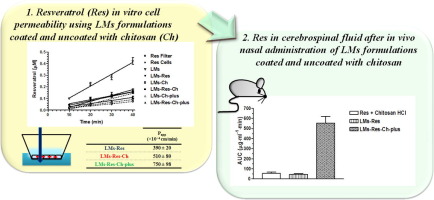- Home
- Blog
- News
- Basics
- Sources
- Agencies, Regulatory & Organisations
- CERSI Excipients Browser
- Excipient Report
- Excipient DMF List
- EXCiPACT Certified Companies
- Excipient Documentation
- Excipient EINECS Numbers
- Excipient E-Numbers
- FDA Inactive Ingredient List
- FDA GRAS Substances (SCOGS) Database
- IPEC Americas
- USP - U.S. Pharmacopeia
- Definitions
- Whitepapers / Publications
- Supplier
- Services
- Media
- Events
- 1st pharmaexcipients Poster Award
- Event Calendar
- Events featured by pharma-excipients
- 4th Annual Formulation & Drug Delivery Congress
- DDF Summit
- ExcipientFest Americas
- ExcipientFest Asia
- Global CompliancePanel
- International Conference and Exhibition on Pharmaceutics & Novel Drug Delivery Systems
- Formulation & Drug Delivery USA Congress
- Laboratory Medicine 2018
- Making Pharmaceuticals Europe
- Making Pharmaceuticals Exhibition
- Pharma Integrates
- PharmaExcipients China @CPhI China
- TTC Technology Training Center
- Jobs
- Online Sourcing
- Contact
08. July 2018
The purpose of this study was to develop self-microemulsifying (SME-) tablets to improve resveratrol solubility whilst delivering resveratrol in a preferred tablet dosage form. Resveratrol was dissolved in liquid self-microemulsifying drug delivery system (SMEDDS) (10 % w/w) and solidified through adsorption on several different solid carriers. Two ranges of synthetic amorphous silica (Sylysia® 290, 350, 470, 580; Syloid® 244FP, AL-1FP) as well as granulated magnesium aluminometasilicate...
28. March 2018
Production of nanosuspension for drug bioavailability improvement has been accepted and frequently used in pharmaceutical industry. Normally, the preparation started from crystalline drug. However, some previous studies found that amorphous drug powder obtained from processes such as spray-drying might contribute to nanosizing process, i.e. reduced homogenization cycles and smaller achievable particle size. The mechanism behind this improved behavior was still unclear. In order to...
05. March 2018
Lipid microparticles (LMs) uncoated or coated with chitosan and containing the neuroprotective polyphenol, resveratrol were developed for its targeting to the brain via nasal administration. The lipid microparticles loaded with resveratrol (LMs-Res) were produced by melt emulsification, using stearic acid as lipid material and phosphatidylcholine as the surfactant.
18. January 2018
This work addresses the establishment and characterization of gellan gum:pectin (GG:P) biodegradable mucoadhesive beads intended for the colon-targeted delivery of resveratrol (RES). The impact of the polymer carrier system on the cytotoxicity and permeability of RES was evaluated. Beads of circular shape (circularity index of 0.81) with an average diameter of 914 μm, Span index of 0.29, and RES entrapment efficiency of 76% were developed.
27. December 2016
ABSTRACT For pharmaceutical tablet prodution, there are lots of commercial excipients available. All these excipients influence the drug release of tablet cores in different ways. In this project the influence of Carbopol 71G®, Carbopol 971P®, Fujicalin®, Neusilin US2®, Neusilin UFL2®, Pemulen TR-1®, Pemulen TR-2®, Sepistab ST 200® and Sepitrap 80® on drug release was investigated. Tablets were compressed with resveratrol as a model drug using an eccentric press. Tablets containing 2...
09. August 2016
ABSTRACT For pharmaceu cal tablet produc on, there are lots of commercial excipients available. All these excipients in uence the drug release of tablet cores in di erent ways. In this project the in uence of Carbopol 71G®, Carbopol 971P®, Fujicalin®, Neusilin US2®, Neusilin UFL2®, Pemulen TR-1®, Pemulen TR-2®, Sepistab ST 200® and Sepitrap 80® on drug release was inves gated. Tablets were compressed with resveratrol as a model drug using an eccentric press. Tablets containing 2 wt.%...




